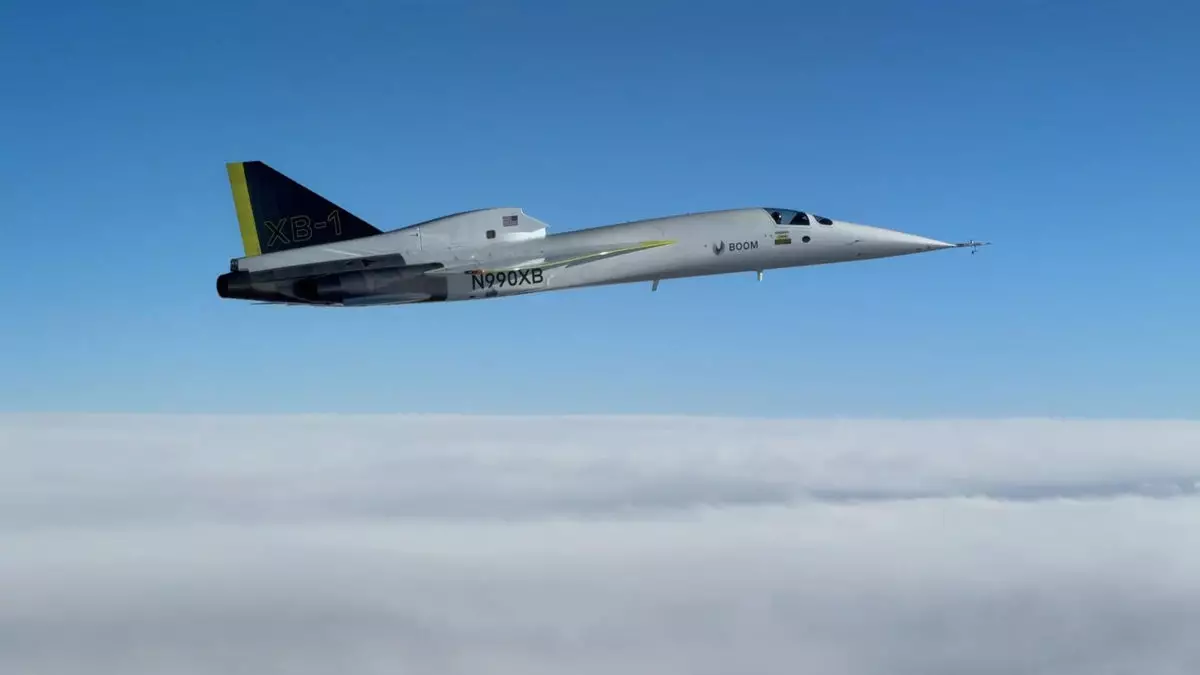Boom Supersonic, a pioneering player in the aerospace industry, is stepping boldly into a realm that many had once deemed a relic of the past. The successful test of the XB-1, a prototype civil aircraft, marked a significant milestone as it exceeded the speed of sound on three separate flights. This historical achievement unfolded over the sun-baked expanse of the California desert, a fitting backdrop for a venture that aspires to redefine commercial aviation. With this groundbreaking feat, Boom’s CEO, Blake Scholl, exclaims that the moment has come to revitalize supersonic travel—bringing it not only back to the sky but also into the mainstream for global travelers.
The significance of Boom’s advancements cannot be overstated, particularly as this flight was the first to demonstrate supersonic capabilities in an American-designed civil aircraft. The XB-1, a remarkably smaller prototype—just one-third of the intended Overture airliner—serves as both a testing ground and a technological showcase for Boom’s ambitions. While the Overture is projected to accommodate 64 to 80 passengers, the XB-1 is focused on validating design features that will inform its larger counterpart’s development. With aspirations to initiate test flights of the Overture by the decade’s conclusion, Boom is resolutely pursuing its vision of redefining speed in commercial travel.
Yet, amid this optimism lies a formidable road ahead. Central to Boom’s plans is the development of a new, efficient supersonic engine, dubbed Symphony. The existing XB-1 prototype relies on legacy General Electric J85-15 engines—proven technology but one that highlights the gap Boom must bridge to achieve its ambitious speed and efficiency goals. Scholl acknowledges the complexity of creating a next-generation engine after failing to secure partnerships with major aerospace giants like Rolls-Royce and Pratt & Whitney. The success of Overture is directly tied to Symphony’s ability to perform at remarkable speeds—projected to reach 1,300 mph, essentially doubling the velocity of conventional aircraft.
Despite Boom’s fervent pursuit, there are notable voices within the aerospace community expressing skepticism. Critics argue that Boom’s reliance on outdated engine technology to power its prototype raises questions about the company’s capability to innovate in a competitive market. Richard Aboulafia, managing director of AeroDynamic Advisory, articulated this skepticism by emphasizing that the heart of supersonic travel lies within its propulsion systems. He cautions that without a coherent strategy to introduce a new engine, Boom’s endeavors may resemble a mere exercise in theoretical aircraft design rather than the practical realization of supersonic travel.
Scholl’s insistence on overcoming these challenges underscores the inherent risks of ambitious aerospace projects. He admits that Overture’s development poses complexities that extend well beyond the XB-1’s successful test flights. For commercial supersonic flight to return, Boom will need not only to demonstrate engineering prowess but also to navigate the regulatory landscape that governs commercial aviation. The pathway may be rife with obstacles, but Boom’s commitment to innovation and Scholl’s resolute vision position the company at the forefront of what could become a new era in air travel.
As Boom focuses its efforts on refining its designs and overcoming engineering hurdles, the world watches with bated breath. The prospect of airborne speeds that defy contemporary norms is tantalizing, offering possibilities for shorter travel times and a new class of air travel experience. Ultimately, while the company grapples with criticisms and hurdles, its journey resonates with a larger narrative—the quest to push boundaries and reclaim a slice of the sky that has remained untapped for decades. The success of Overture could signal a transformative phase, not only for Boom but for the entire aviation industry, heralding a return to supersonic flight that could re-shape how the world connects.


Napsat komentář